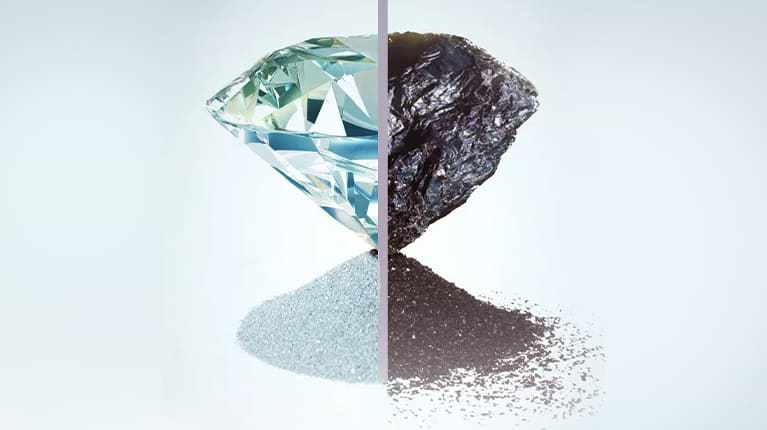Understanding Your Options: Lab Grown Diamonds or Mined Diamonds?
3 min read
Introduction
Diamonds have long captivated humanity with their brilliance and allure. Whether adorning a ring finger or enhancing industrial precision, these gems hold a timeless fascination. In today’s market, the origin of diamonds—whether lab grown or mined—has become a pivotal point of interest for consumers worldwide.
What are Lab Grown Diamonds?
Lab grown diamonds, also known as synthetic diamonds, are created through technological processes that replicate the natural diamond formation. Unlike mined diamonds formed deep within the Earth’s crust over millions of years, lab grown diamonds are cultivated in controlled laboratory environments lab grown diamonds or mined. The two primary methods used are High Pressure High Temperature (HPHT) and Chemical Vapor Deposition (CVD).
Comparison with Mined Diamonds
When comparing lab grown diamonds to their mined counterparts, several key distinctions arise. Chemically, both types are identical—composed of pure carbon atoms arranged in a crystalline structure. However, their physical properties and the environmental footprint of their production vary significantly.
Lab grown diamonds often exhibit fewer internal flaws and can be tailored for specific qualities like color and clarity. In contrast, mined diamonds, while natural and historically valued, may contain natural imperfections and color variations influenced by geological conditions.
Quality and Grading
Both lab grown and mined diamonds are evaluated based on the famous 4Cs: Cut, Color, Clarity, and Carat weight. Certification bodies like the Gemological Institute of America (GIA) provide rigorous standards to ensure transparency and consistency in diamond grading.
Cost Comparison
The cost of diamonds, whether lab grown or mined, fluctuates based on various factors. Lab grown diamonds typically offer a more affordable alternative due to their controlled production process and increasing availability in the market. However, pricing can still vary based on size, quality, and market demand.
Popularity and Consumer Perception
In recent years, consumer perception of lab grown diamonds has shifted positively. Recognizing their ethical sourcing and technological innovation, many buyers appreciate the sustainable aspects and customizable qualities of lab grown diamonds. However, traditionalists still value the rarity and natural beauty of mined diamonds.
Ethical Considerations
Ethical concerns surrounding diamond mining have driven interest in lab grown diamonds. Mined diamonds are often associated with environmental impact and labor controversies in regions where mining occurs. In contrast, lab grown diamonds offer a more controlled and transparent production process, appealing to ethically conscious consumers.
Technological Advancements
Advancements in diamond synthesis technology continue to push boundaries in the industry. Researchers and manufacturers are exploring new methods to enhance the efficiency and scalability of lab grown diamond production, paving the way for broader applications beyond jewelry.
Applications and Uses
Beyond adornment, diamonds play crucial roles in various industries, including healthcare, electronics, and renewable energy. Lab grown diamonds, with their purity and customizability, are increasingly sought after for industrial applications where precision and durability are paramount.
Misconceptions and Myths
Common misconceptions about lab grown diamonds often revolve around their quality, value, and longevity compared to mined diamonds. Debunking these myths involves educating consumers about the technological advancements and stringent grading standards applied to lab grown diamonds.
Cultural and Symbolic Significance
Throughout history, diamonds have held deep cultural and symbolic significance. From ancient civilizations to modern engagements, these gems symbolize love, strength, and enduring beauty. Both lab grown and mined diamonds continue to carry these rich cultural narratives, albeit through different lenses.
Buying Guide
For consumers navigating the diamond market, understanding the nuances between lab grown and mined diamonds is essential. Factors such as budget, desired characteristics, and ethical considerations should guide purchasing decisions. Reputable retailers and certification agencies can provide valuable guidance and assurance.
Case Studies
Real-life examples highlight the growing acceptance and success of lab grown diamonds in various markets. Customer testimonials often underscore the satisfaction with the quality, value, and ethical integrity of lab grown diamonds, reinforcing their appeal among diverse demographics.
Conclusion
In conclusion, the debate between lab grown diamonds and mined diamonds reflects broader shifts in consumer values and technological advancements. While mined diamonds hold a timeless allure rooted in nature’s wonders, lab grown diamonds represent a modern, sustainable alternative with customizable features and ethical benefits. As technology continues to evolve, both types of diamonds will likely coexist, offering consumers a choice that aligns with their values and preferences in the ever-evolving landscape of luxury and sustainability.






